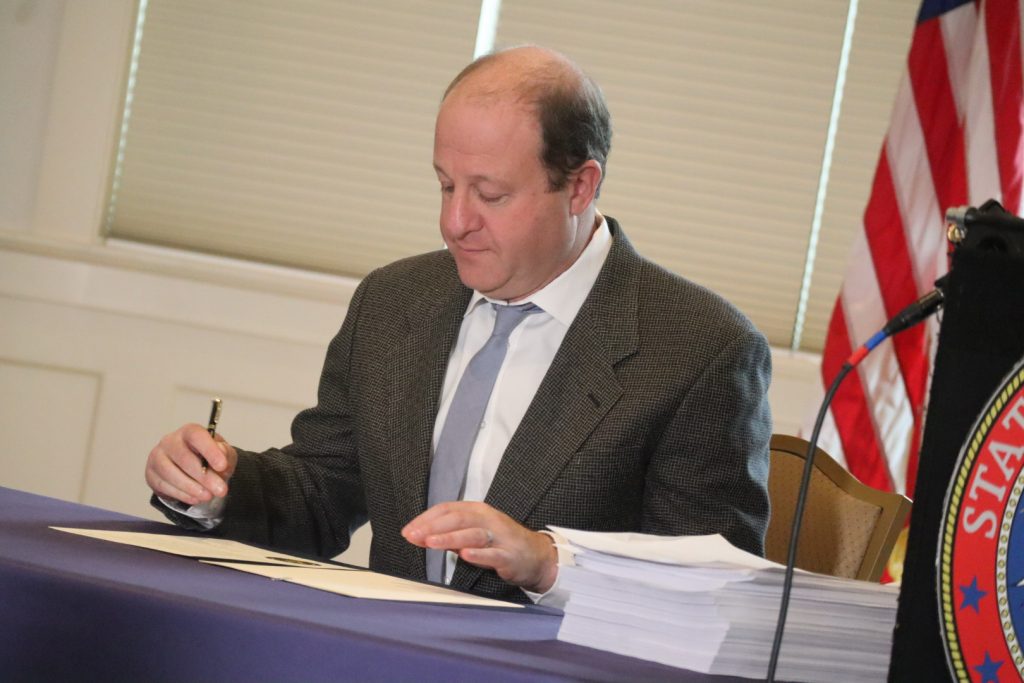‘Tip of the iceberg:’ What Colorado governor’s cut to Medicaid reimbursement rates means for health care providers
Jared Polis and health care leaders say the reduction in provider rates is an early manifestation of the federal megabill’s impact on the state

Andrew Maciejewski/Summit Daily News
Colorado health care providers, already bracing for future upheaval as a result of federal policy changes, will now have to contend with less revenue this year and next after Gov. Jared Polis issued a suite of spending cuts.
Polis last week signed an executive order containing more than $100 million in cuts and $147 million in redirected funds for the current fiscal year to help close a nearly $800 million budget deficit. The deficit was caused by a reduction in income tax revenue for the state as a result of the sweeping megabill passed in July by congressional Republicans and signed into law by President Donald Trump.
Among the largest single-item cuts was a reduction in Medicaid provider reimbursement rates.
State lawmakers, in their 2025-26 fiscal year budget, had approved a 1.6% increase in provider rates, which went into effect at the start of the budget year on July 1. Polis’ order rescinds that increase starting in October and through the remainder of the budget year, which ends on June 30, 2026.
Cutting provider rates means the state will pay less to hospitals and private providers to cover the cost of providing care to Medicaid patients. The change is expected to save the state roughly $38 million.
The cut to provider rates is different from the Medicaid changes contained in Trump’s megabill, colloquially called the “big, beautiful bill.” Those changes, projected to reduce federal Medicaid spending by $1 trillion through 2034, mostly go into effect in January 2027.
Still, Polis said the spending cuts he made were a direct effect of the “big, beautiful bill” and the impact it had on the state budget. Had it not been Medicaid, Polis would have had to find money elsewhere to close the deficit, like K-12 education or public safety, both of which were spared from cuts.
“I don’t look at it as us cutting health care,” Polis said in response to a lawmaker’s question during a budget hearing last week. “I look at it as us delivering the cuts that were in (the megabill).”

The Colorado Hospital Association said in a statement last week that while it “understands the extraordinary budget challenges the state is facing,” the group is disappointed by the move.
“Colorado hospitals are already navigating very difficult financial pressures, and this setback further strains the resources needed to care for patients and communities,” the association said. “We recognize the tough choices required in this budget process, but reductions to provider rates — particularly alongside other health care cuts stemming from (the megabill) — add to the challenges ahead.”
Yet not all providers will be affected.
Federally qualified health centers, also known as community clinics, have a special reimbursement plan through Medicaid because of their status as safety net providers.
These clinics are obligated to provide care to anyone, regardless of insurance, and often provide integrated care — meaning a patient can receive services like physical, mental, and dental care all in-house.
Because of this, Medicaid reimbursements are paid out in a lump sum that amounts to the average cost of providing all of that care to a patient, which provides greater Medicaid funding overall for the clinic. Hospitals and private providers, by contrast, receive reimbursements on a per-service basis.
“They’re paying us more for Medicaid services than what a private practice would make, but in return, we’re committed to covering everyone regardless of insurance coverage,” said Dustin Moyer, CEO of the Western Slope-based Mountain Family Health Centers.

Moyer said community clinics like Mountain Family won’t see a reduction in Medicaid reimbursements, with the cut to provider rates instead focused on hospitals and private providers.
But Moyer said he’s concerned about the broader health care system.
“We have great hospital partners who are playing a critical role in access to care,” he said. “I worry about what these cuts will mean to their operations, while at the same time being grateful that we won’t feel those cuts right away.”
There are also other health care cuts included in Polis’ executive order that Moyer said could reduce revenue for clinics. That includes a $750,000 cut to a state program that provides incentive-based payments for providers who hit certain goals to improve their care.
Polis also cut roughly $130,000 in outreach efforts for the Cover All Coloradans program, which provides Medicaid coverage to undocumented immigrant children and pregnant women.
Coverage itself, however, is not being cut, but Moyer said fewer funds for promotional efforts could have an indirect effect on community clinics.
“We’re trying to figure out what we can do at Mountain Family to ensure our patients still know about the resources and what they can do to sign up if they’re eligible,” he said.
Adam Fox, deputy director of the Colorado Consumer Health Initiative, said the cuts ordered by Polis are a “prelude to potentially much more devastating cuts” that will come once most of the federal megabill’s changes go into effect.
He said Colorado has been “forced into a situation where the only choices are bad choices, and we have to evaluate what’s going to be the least painful.”
Fox said both the megabill and the Taxpayer’s Bill of Rights, or TABOR, a mechanism that limits government spending that is unique to Colorado, are to blame. TABOR is an amendment to the Colorado Constitution approved by voters in 1992 that restricts government spending to the rate of population growth plus inflation.
Policymakers have found that mandate to be particularly challenging when it comes to responding to the state’s health care needs. While the rate of spending set under TABOR hovers between 3% and 4%, medical inflation has ballooned to around 8%, according to the Colorado Department of Health Care Policy and Financing.
“There isn’t really room to cut in a way that doesn’t cause pain for Coloradans,” Fox said.
Polis, during last week’s budget hearing, told lawmakers that his cuts were “just the tip of the iceberg.”
“Many of the cuts on health care are in two years, in three years,” he said. “It’s going to be a very challenging time for the legislature.”

Support Local Journalism

Support Local Journalism
As a Summit Daily News reader, you make our work possible.
Summit Daily is embarking on a multiyear project to digitize its archives going back to 1989 and make them available to the public in partnership with the Colorado Historic Newspapers Collection. The full project is expected to cost about $165,000. All donations made in 2023 will go directly toward this project.
Every contribution, no matter the size, will make a difference.









